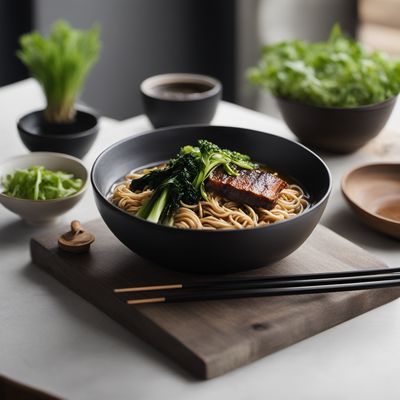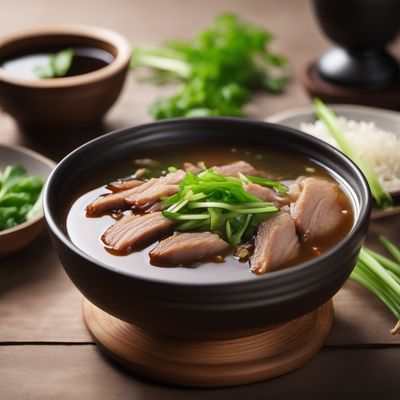
Recipe
Anhui-style Takayama Ramen
Savory Fusion: Anhui-style Takayama Ramen with a Chinese Twist
4.5 out of 5
This recipe combines the flavors of Takayama ramen, a popular Japanese dish, with the unique characteristics of Anhui cuisine. The result is a delicious fusion of Japanese and Chinese flavors that will tantalize your taste buds.
Metadata
Preparation time
20 minutes
Cooking time
2 hours
Total time
2 hours and 20 minutes
Yields
4 servings
Preparation difficulty
Medium
Suitable for
Omnivore, Low carb, High protein, Dairy-free, Nut-free
Allergens
Soy, Wheat (in ramen noodles)
Not suitable for
Vegetarian, Vegan, Gluten-free, Paleo, Keto
Ingredients
In this adaptation, we infuse the original Takayama ramen with the bold and spicy flavors of Anhui cuisine. The broth is enhanced with Anhui-style spices, such as Sichuan peppercorns and dried chili peppers, to give it a fiery kick. Additionally, we incorporate Anhui's love for braised meats by slow-cooking the pork in a fragrant mixture of soy sauce, ginger, and star anise. These modifications add a unique twist to the traditional Japanese ramen, creating a fusion dish that showcases the best of both cuisines. We alse have the original recipe for Takayama ramen, so you can check it out.
-
4 cups (950ml) chicken broth 4 cups (950ml) chicken broth
-
2 cups (470ml) water 2 cups (470ml) water
-
2 tablespoons soy sauce 2 tablespoons soy sauce
-
1 tablespoon dark soy sauce 1 tablespoon dark soy sauce
-
1 tablespoon Shaoxing wine 1 tablespoon Shaoxing wine
-
1 tablespoon vegetable oil 1 tablespoon vegetable oil
-
1 teaspoon Sichuan peppercorns 1 teaspoon Sichuan peppercorns
-
2 dried chili peppers 2 dried chili peppers
-
2 cloves garlic, minced 2 cloves garlic, minced
-
1-inch piece ginger, sliced 1-inch piece ginger, sliced
-
2 star anise 2 star anise
-
1 pound (450g) pork belly, sliced 1 pound (450g) pork belly, sliced
-
4 servings of ramen noodles 4 servings of ramen noodles
-
Toppings: sliced green onions, soft-boiled eggs, bamboo shoots, nori seaweed Toppings: sliced green onions, soft-boiled eggs, bamboo shoots, nori seaweed
Nutrition
- Calories (kcal / KJ): 650 kcal / 2720 KJ
- Fat (total, saturated): 35g, 12g
- Carbohydrates (total, sugars): 45g, 2g
- Protein: 40g
- Fiber: 3g
- Salt: 3g
Preparation
-
1.In a large pot, heat the vegetable oil over medium heat. Add the Sichuan peppercorns, dried chili peppers, garlic, ginger, and star anise. Sauté for 1-2 minutes until fragrant.
-
2.Add the pork belly slices to the pot and cook until browned on all sides.
-
3.Pour in the chicken broth, water, soy sauce, dark soy sauce, and Shaoxing wine. Bring to a boil, then reduce the heat and simmer for 1.5-2 hours until the pork is tender.
-
4.While the broth is simmering, cook the ramen noodles according to the package instructions. Drain and set aside.
-
5.Once the pork is tender, remove it from the broth and slice it into thin pieces.
-
6.To serve, divide the cooked ramen noodles among bowls. Ladle the hot broth over the noodles and top with the sliced pork, green onions, soft-boiled eggs, bamboo shoots, and nori seaweed.
Treat your ingredients with care...
- Pork belly — For a leaner option, you can use pork loin instead of pork belly. However, the belly cut adds richness and flavor to the dish.
- Sichuan peppercorns — Toasting the peppercorns in a dry pan before using them will enhance their aroma and flavor.
Tips & Tricks
- Adjust the spiciness by adding more or fewer dried chili peppers.
- For a vegetarian version, replace the pork with tofu or mushrooms.
- Customize the toppings to your liking by adding corn, bean sprouts, or sliced chili peppers.
- To achieve a silky texture, simmer the broth on low heat without boiling it vigorously.
- For an extra umami boost, add a splash of black vinegar to the broth before serving.
Serving advice
Serve the Anhui-style Takayama Ramen piping hot in individual bowls. Garnish with a sprinkle of sesame seeds and a drizzle of chili oil for an added kick. Accompany the dish with a side of pickled vegetables or a simple cucumber salad to refresh the palate between bites.
Presentation advice
To create an appealing presentation, arrange the sliced pork belly, soft-boiled eggs, and other toppings in an organized manner on top of the noodles. Sprinkle some finely chopped green onions and nori seaweed on the surface of the broth for an attractive touch. Serve the ramen in beautiful ceramic bowls to enhance the visual appeal.
More recipes...
For Takayama ramen
For Japanese cuisine » Browse all
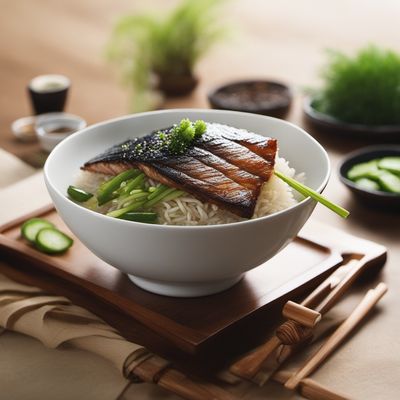
Tai Zuke Don - Marinated Sea Bream Rice Bowl
Ocean Delight Rice Bowl - A Flavorful Journey of Marinated Sea Bream
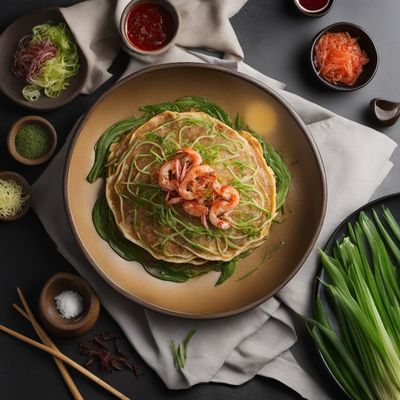
Savory Japanese Pancake with a Twist
Okonomiyaki: The Ultimate Japanese Pancake Experience

Japanese-style Cauliflower with Ham and Cheese
Umami Cauliflower Delight: A Japanese Twist on a Croatian Classic
More Japanese cuisine dishes » Browse all

Ise udon
Thick Noodles in Broth
Ise udon is a Japanese noodle dish that is made with udon noodles and a variety of toppings. It is a hearty and flavorful dish that is perfect for...
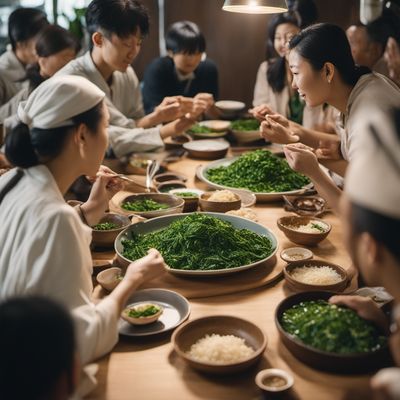
Goma-ae
Sesame Spinach
Goma-ae is a traditional Japanese dish made with spinach and sesame sauce.
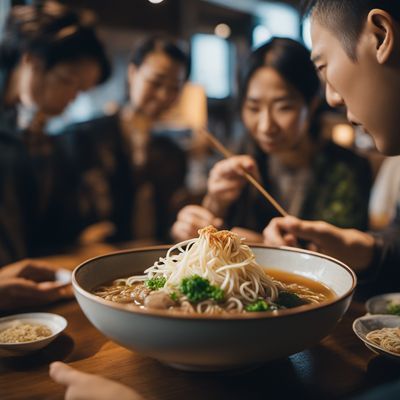
Toshikoshi soba
End of the year buckwheat noodles soup
Toshikoshi soba is a traditional Japanese noodle dish that is eaten on New Year's Eve. It consists of soba noodles in a hot broth made from dashi,...

